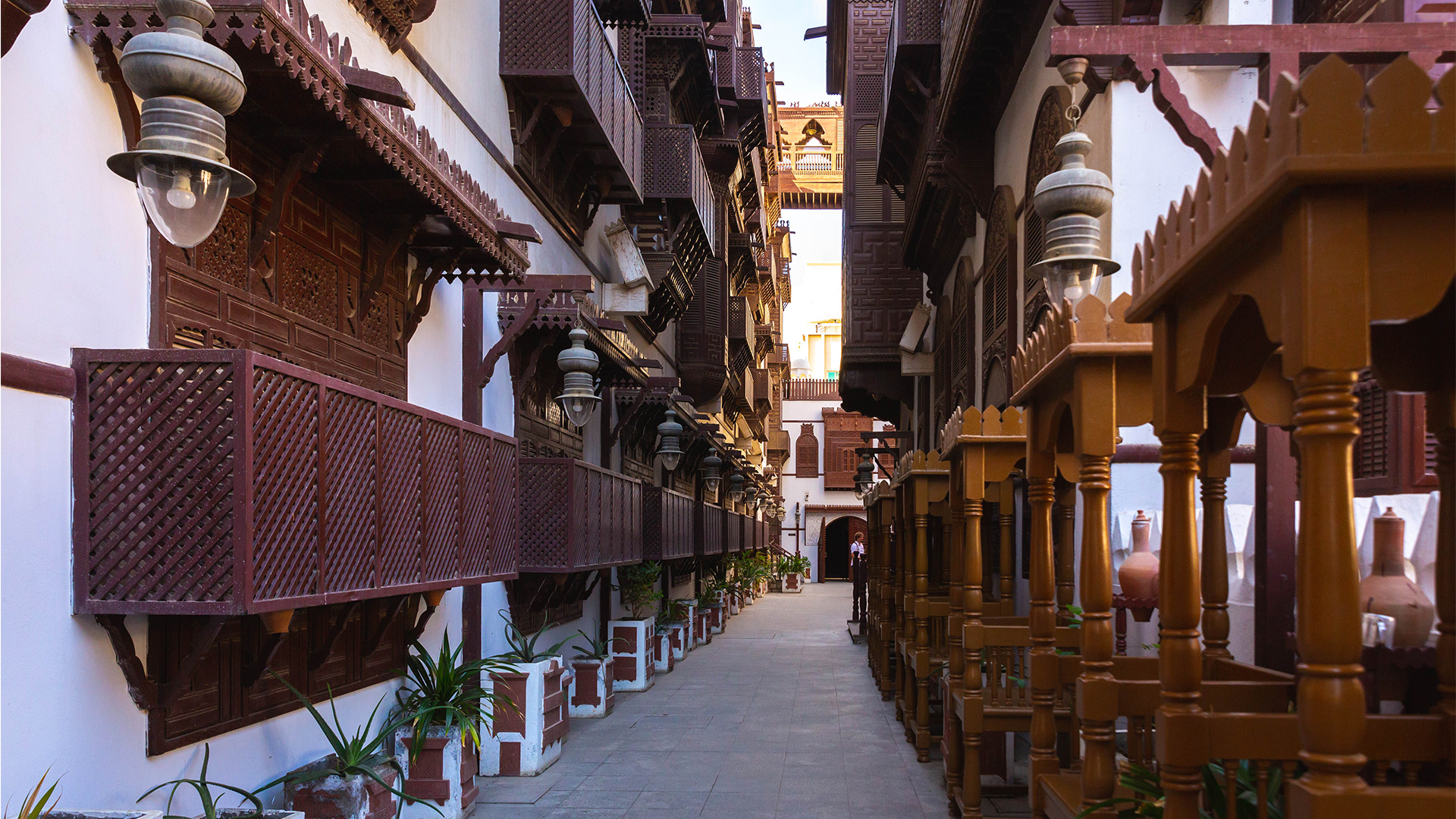Jeddah has a history that predates modern Arabia. As one of the Gulf’s oldest seaports and the gateway to the holy city of Makkah, Jeddah has been welcoming the world for centuries — which has helped transform the city into the culturally rich melting pot it is today.
For a fascinating look into Jeddah’s long and cosmopolitan past, take a trip to the Tayebat Museum for a superbly curated representation of the city’s 2,500-year history. Located in the Al Faisaliyah district, the museum is housed in a multiroom complex that re-creates the traditional Hijazi architecture of the old city, with bay windows overlaid with intricate wooden lattice work and ornate coral masonry.
With several floors of in-depth exhibits, the museum offers a living history lesson on the foundation of Jeddah, Saudi Arabia and the wider Arabian Peninsula. There is also an entire floor dedicated to the city’s rich Islamic heritage.

The History of Islam
Highlights include an intricately modeled re-creation of the pilgrimage to Makkah, including the Kaaba, the square building located in the center of the Grand Mosque, the holiest shrine in Islam. Accompanying material in both Arabic and English gives detailed descriptions of the key areas marking Prophet Muhammad’s journey.
Elsewhere on the floor, you’ll find exquisite art, early manuscripts, pottery, old coins and weapons, and a map detailing the spread of Islam throughout the world.
The History of Jeddah
The museum’s exhibits on pre-Islamic history travel even further back in time, particularly in relation to Jeddah, where settlements are believed to have existed in the sixth century A.D.
Visitors can read early scripts of Arab geographers and travelers, in which Jeddah is named as a thriving seaport that helped fuel trade in Arabia, originally benefiting the Islamic caliphates. They can also see artifacts belonging to the early fishing tribes that inhabited the area, as well as a display on the Red Sea (which featured prominently in Jeddah’s foundation) and marine life native to the region.

How Saudi Arabia Was Formed
From primitive life millions of years ago, when Arabia spilled over with rivers and green meadows, to the formation of the modern kingdom by its founding ruler King Abdulaziz, the museum leaves no stone unturned in its depiction of the country’s history.
Adorning the walls are pictures of the king with foreign dignitaries including British Prime Minister Winston Churchill and U.S. President Franklin D. Roosevelt, along with the story of King Abdulaziz’s rise to power and his reign over a newly unified kingdom.
Visitors can also browse exhibits on Saudi culture, including nomadic Bedouin life, traditional clothing (including a section on Hijazi bridal wear), and the country’s currency.
When to Visit

Tayebat Museum is open from 8 a.m. to noon and 5 to 9 p.m. every day except Friday, when it is closed. The entrance to the museum is SAR80 (about US$21.32), and tour guides for groups can be arranged by calling ahead. (The in-house guides are more than happy to share their knowledge and passion for the museum’s exhibits in several different languages.) Evenings can be the best time to go to avoid crowds and for beautiful photo opportunities of well-lit models of Islamic architecture, including mosques, traditional wooden homes, and even a colorfully illuminated minaret.

